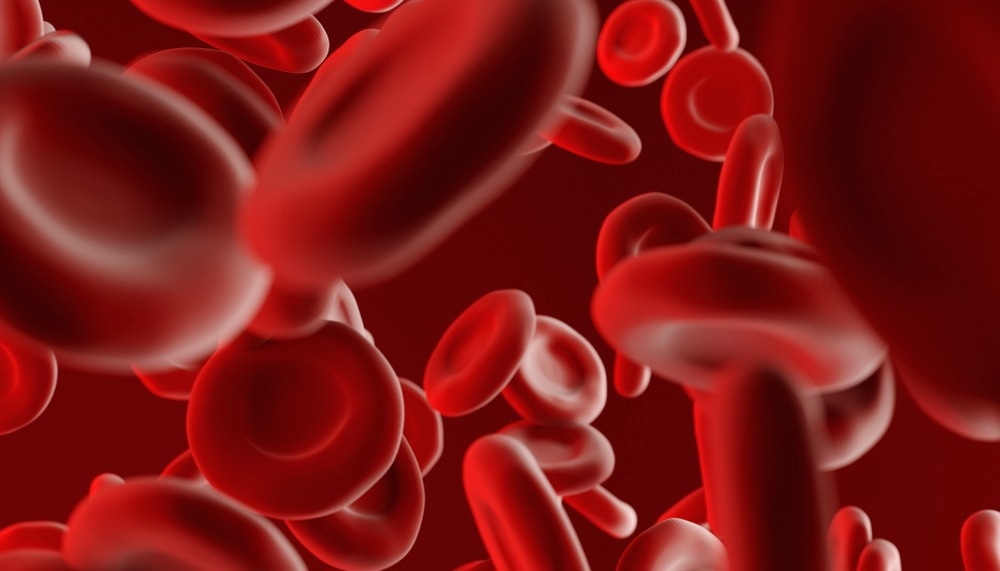Laser speckle contrast imaging is an effective tool for full-field blood flow imaging. Recently, the technique has gained significant attention owing to its increasing adoption for brain blood flow studies.

Image Credit: Vladimir Zotov/Shutterstock.com
What is Laser Speckle Contrast Imaging?
An interference pattern/speckle pattern is formed at the detector when coherent light is used to illuminate biological tissue. Laser speckle contrast imaging is based on the dynamic change in the backscattered light due to interaction with red blood cells (RBCs).
Particle movement within tissues causes fluctuations in the speckle pattern, leading to the blurring of speckle images when these images are obtained with an exposure time longer than or equal to the speckle fluctuation time scale. This blurring can be attributed to blood flow if the fluctuations are caused by RBC movement.
Currently, laser speckle imaging systems can image the blood flow in near real-time due to a significant increase in cheap computing power. This fast, cheap, and simple imaging technique can be utilized to visualize perfusion in different tissues as it provides two-dimensional (2D) perfusion maps of large surfaces.
Thus, the technique is used extensively in clinical practice, where it is suitable for perfusion assessment in different tissues. For instance, the imaging system has been used to image the esophagus, liver, skin microvasculature, cerebral blood flow (CBF), retinal perfusion, burn wounds, and the large intestine.
Laser Speckle Contrast Imaging to Quantify Blood Flow Dynamics
Speckle arises due to random interference of coherent light. The interaction between a random scattering medium and coherent light causes the light to scatter from different positions within the medium and travel a distribution of distances, leading to destructive and constructive interference that varies with the scattering particle arrangement regarding the photodetector.
The interference varying randomly in space can be viewed when this scattered light is imaged onto the camera, producing an intensity pattern that also varies randomly, which is known as speckle.
Fluctuations can occur in the interference when the scattering particles are moving, leading to variations in the intensity pattern at the photodetector. The spatial and temporal statistics of this speckle pattern can offer information about the scattering particle motion. For instance, the spatial variations/temporal variations can be measured and analyzed to quantify particle motion.
2D blood flow maps can be obtained with extremely high temporal and spatial resolution by imaging the speckle pattern onto a charge-coupled device (CCD) camera and quantifying the speckle pattern spatial blurring caused by the blood flow using the spatial variation approach.
In regions of higher blood flow, the speckle pattern intensity fluctuations are more rapid and become blurred when integrated over the 1-10 ms CCD camera exposure time. Relative blood flow spatial maps can be obtained by acquiring a speckle pattern image and quantifying the blurring of speckles in the image through spatial contrast measurement of intensity variations.
The speckle contrast, which is the ratio of the spatial standard deviation to the mean intensity, is computed to quantify the speckle blurring.
Multi-Exposure Laser Speckle Imaging (MESI)
Although the first laser speckle contrast imaging applications were single exposure methods where the exposure time remains constant with each measurement, quantifying the measured perfusion is extremely difficult in single exposure as quantitative accuracy and sensitivity are significantly dependent on exposure time.
Moreover, single-exposure setups lack high accuracy for larger velocity variations. The MESI method was later developed to increase the reproducibility of results. The MESI setup can vary the exposure time while ensuring a constant intensity. Additionally, a new, more comprehensive mathematical model was also derived for speckle imaging by considering static scattered light.
The MESI setup displays linearity with changes in speed over a large range of velocities, which allows semi-quantitative measurements. The speckle model can be utilized to obtain the noise of the systems, the correlation time based on Lorentzian velocity distribution, and the fraction of dynamically scattered light.
New Developments
In a paper published in the journal Scientific Reports, researchers used a modified microcirculation imager/integrated sidestream dark field-laser speckle contrast imaging (SDF-LSCI) to experimentally evaluate the effect of optical properties of scatterers in vivo and in vitro on the proportionality constant (α), which is crucial for the accurate quantification of the inverse relation between decorrelation time and blood flow velocity.
Researchers proposed a practical model-based scaling factor to correct for multiple scattering in the microcirculatory vessels. The results demonstrated that SDF-LSCI can offer a quantitative measure of vessel morphology and flow velocity, enabling quantification of blood flow, velocity, and tissue perfusion.
More from AZoOptics: What Is Laser Diffraction and How Is It Used to Measure Particle Size Distributions?
References and Further Reading
Nadort, A., Kalkman, K., van Leeuwen, T. G., Faber, D. J. (2016). Quantitative blood flow velocity imaging using laser speckle flowmetry. Scientific Reports, 6(1), 1-10. https://doi.org/10.1038/srep25258
Heeman, W., Steenbergen, W., Boerma, E. C. (2019). Clinical applications of laser speckle contrast imaging: A review. Journal of Biomedical Optics, 24(8). https://doi.org/10.1117/1.JBO.24.8.080901
Boas, D. A., Dunn, A. K. (2010). Laser speckle contrast imaging in biomedical optics. Journal of Biomedical Optics, 15(1). https://doi.org/10.1117/1.3285504
Disclaimer: The views expressed here are those of the author expressed in their private capacity and do not necessarily represent the views of AZoM.com Limited T/A AZoNetwork the owner and operator of this website. This disclaimer forms part of the Terms and conditions of use of this website.